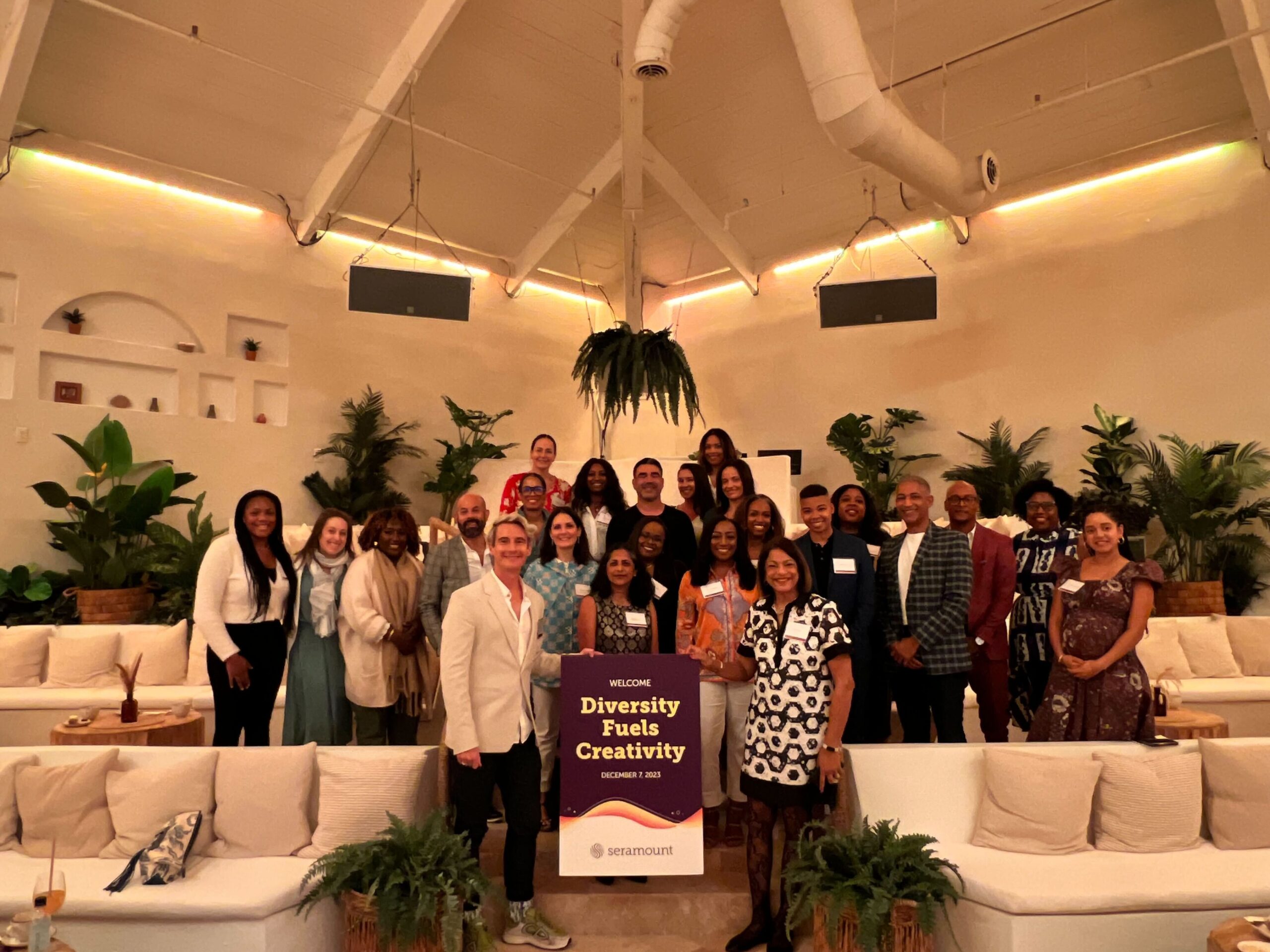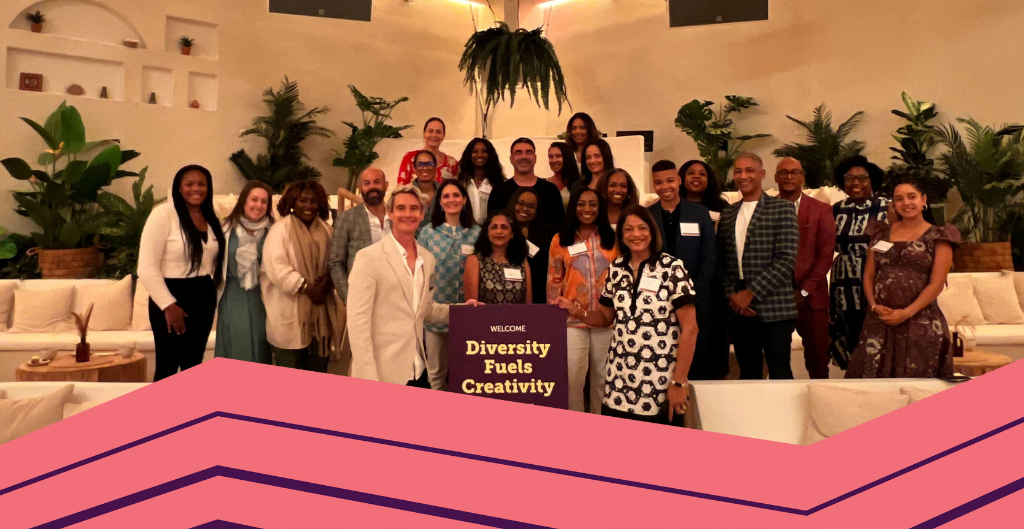Seramount hosted an intimate convening of DEI and Talent leaders during Miami Art Week, themed “Diversity Fuels Creativity,” with an agenda built around stories of how diversity, creativity, and business are closely tied in the worlds of art, fashion, and design. We heard from colleagues and friends about inspiring and often challenging situations they faced at work, from building diverse talent pipelines to garnering support of senior leadership for change, from including diverse representation in product development to connecting advertising messaging to actual buyers. We shared lessons and ideas and missteps to help each other see ways around these obstacles, with the knowledge that diversity not only fuels creativity but also is proven to propel business performance and growth.
Empowering an Inclusive Art World
Catherine Almonte, Global Head of Equity and Impact at Sotheby’s, shared powerful insights into why the art world has had so many inherent barriers to inclusion and how she has dedicated her work to surmounting them at an institution older than the USA itself. Almonte opened by setting this context: In the art world, many roles are parttime, underfunded and located in the most expensive cities in the world—New York, Paris, London, Dubai. Internships are mostly entirely unpaid. Two people in the world graduate each year with a PhD in African Art. Auctioneers are mostly white, mostly male, and always have been. With all these barriers, how do you make a place that is meant to be exclusive, more inclusive?
For one, Almonte suggests, develop a pipeline of talent through a revamped internship program (65% of this past year’s interns at Sotheby’s were non-white). Train the next generation of auctioneers and put women like Uni Kim, Sotheby’s first Korean auctioneer and one of the youngest women auctioneers, at the gavel to show other young people that there is a place for them in the art world too. Prepare for the coming shift of wealth to Gen Z, which will fuel a new generation of art buyers. Bring a level of cultural awareness to the artists and art sold, supported, and recommended.
Representation in the Marketplace
Lance LaVergne, the Chief Diversity Officer of PVH, a clothing company that owns brands such as Tommy Hilfiger and Calvin Klein, shared his experience of working across his organization to create opportunities for collaboration and feedback on ad campaigns. He helped create a brand marketing advisory board to review inclusive representations in advertising to prevent missteps that often prove as costly in reputation as they do in revenue loss. He reminded us that there is rarely a simple or clear-cut interpretation of images and words, with several illuminating examples.
Where Passion Meets Purpose
Like the art world, the fashion world has inherent barriers to entry. Nicole Moses, the Director of Inclusion and Belonging and Corporate Giving, J.Crew Group, shared some eye-opening facts about the shoe design industry in particular. While only around 5% of apparel designers are Black (under-indexed from total Black population in the USA of around 14%), a mere 2% of shoe design graduates every year are Black. The first Black footwear designer worked professionally in 1986, less than 40 years ago. Many students drop out because of funding; no HBCUs are based in a fashion capital; coveted fashion internships are mostly unpaid; and in New York City, high school art programs are constantly being cut.
Moses partnered directly with J.Crew’s Creative Director to bring to fruition a ground-breaking partnership—PLC x J. Crew—that is helping support the next generation of creatives and diversifying the apparel design talent pipeline for J.Crew. PLC, which stands for Pensole Lewis College of Business and Design, is the only HBCU located in Michigan and now offers a design-focused masterclass where aspiring design students can be mentored in an apprenticeship format by J.Crew employees and their final capsule collection given the chance to be sold at retail by the brand. Today, one of the graduates works full-time at J.Crew.
Think Bigger, Think Future, Think Beyond Talent
After some reflection time and many post-event conversations around creativity and diversity, some key messages have emerged.
1. All of us should think bigger when we think about DEI. Talent is a core component of the work that DEI leaders and practitioners own, but DEI strategy can and should consider customers—existing and future, suppliers, and all stakeholders, and leverage diverse talent in doing so.
2. We need to continue to work on building diverse talent pipelines, cultivating, and developing that talent, and ensuring that diversity is reflected and represented at all levels and at all areas of the organization. But just having diverse people across our teams isn’t enough to truly unlock that creative power. We need to create a culture of belonging and psychological safety that values diversity and allows people to be heard and to be creative.
3. The next generation of business growth are Gen Z and beyond. They are our future workforce, suppliers, and investors, and they care deeply about inclusive decision-making, safe and healthy workplace cultures, and the people and places behind the products they buy. They want to see their representation reflected in ads and billboards, on stage, and on podiums for these same products. They are also a more diverse generation than ever before. And the list goes on. This generation is set to inherit a tremendous amount of wealth, and with this transfer of wealth will come buying power and decisions based on values.
Through Seramount’s research on Keeping DEI Strong in Volatile Times we are seeing that leaders are increasingly having to make a more robust business case for DEI investments. Thinking bigger, looking to the future, and capturing the opportunity cost of NOT doing this work can provide some of the strongest foundations for that business case. Diversity actively unlocks creativity, creativity fuels diversity, and the virtuous cycle continues if we are all bold enough to allow it.



